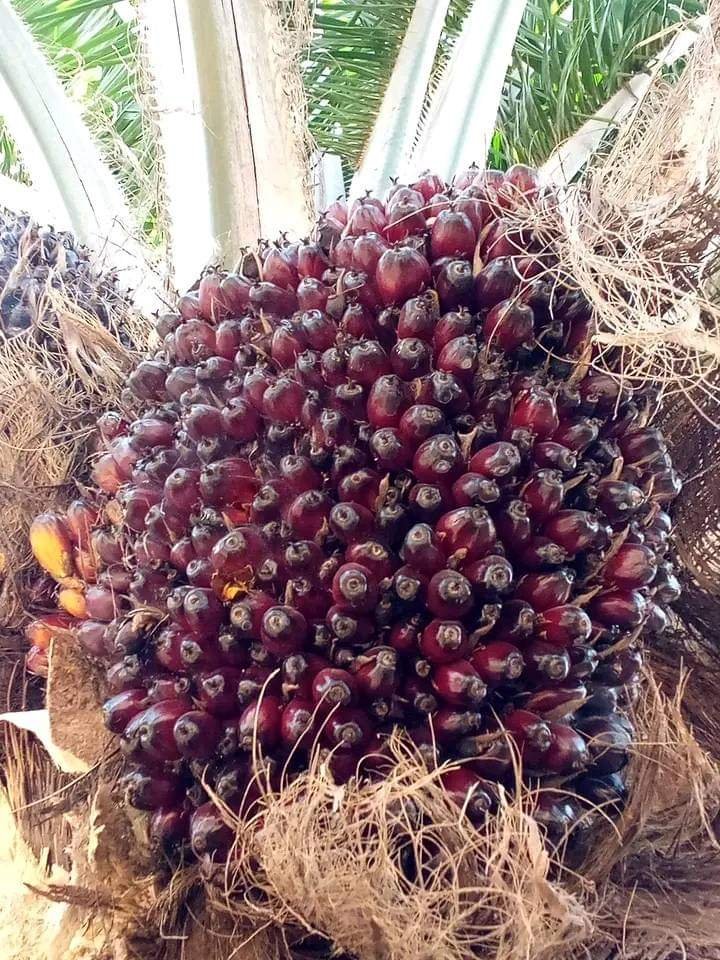Good day my good people of hive community, I hope we all are doing great. I am here to share my knowledge on How to nurture palmfruit seed.

Palm trees are not only iconic symbols of tropical landscapes but also a source of various resources, including palm oil, coconuts, and dates. If you've ever enjoyed the fruits of a palm tree and wondered how to grow one yourself, you're in luck. Nurturing a palm fruit seed into a thriving tree is an enriching and rewarding experience. Here's a comprehensive guide on how to nurse a palm fruit seed:

1. Selecting the Seed:
- Choose a fresh, healthy palm fruit seed. Look for seeds that are plump, firm, and free from any signs of damage or decay. Fresh seeds are more likely to germinate successfully.
2. Preparing the Seed:
- Clean the seed thoroughly to remove any fruit residue. Rinse it under running water and gently scrub off any remaining pulp. Avoid damaging the seed coat during this process.
- Soak the seed in lukewarm water for 24 to 48 hours. This helps to soften the seed coat and kickstart the germination process.

3. Germination:
- Fill a small pot or seed tray with well-draining potting mix. Make a small indentation in the soil and place the palm fruit seed inside, with the pointed end facing downward.
- Cover the seed with a thin layer of soil, ensuring it is completely covered but not buried too deeply.
- Place the pot or tray in a warm, sunny location with indirect sunlight. Palm trees thrive in warm, tropical climates, so maintaining a temperature of around 80-90°F (27-32°C) is ideal for germination.
- Keep the soil consistently moist but not waterlogged. Avoid letting the soil dry out completely, as this can hinder germination.

4. Care and Maintenance:
- Once the seed has germinated and a small shoot emerges from the soil, continue to provide it with adequate sunlight and water.
- As the seedling grows, transplant it into a larger pot with well-draining soil. Choose a pot that is slightly larger than the root ball to allow room for growth.
- Fertilize the palm tree seedling with a balanced, slow-release fertilizer every 4-6 weeks during the growing season to promote healthy growth.
- Monitor the plant for any signs of pests or diseases and take appropriate action if necessary.

5. Transplanting Outdoors:
- After the palm tree has outgrown its pot and developed a strong root system, it can be transplanted outdoors into a sunny, well-drained location.
- Choose a spot in your garden or landscape that receives full sunlight and has plenty of room for the palm tree to grow to its full height.
- Dig a hole that is twice as wide and deep as the root ball of the palm tree. Gently remove the palm tree from its pot and place it in the center of the hole.
- Backfill the hole with soil, gently firming it around the base of the palm tree. Water thoroughly to settle the soil and eliminate any air pockets.
6. Continued Care:
- Water the newly transplanted palm tree regularly, especially during hot, dry weather. Deep, infrequent watering is preferable to frequent shallow watering.
- Mulch around the base of the palm tree to help retain moisture and suppress weed growth.
- Prune any dead or damaged fronds to keep the palm tree looking tidy and healthy.
By following these steps, you can successfully nurse a palm fruit seed into a majestic palm tree that will bring beauty and tropical vibes to your garden or landscape. Remember to be patient and attentive to the needs of your palm tree as it grows, and you'll be rewarded with a flourishing symbol of tropical paradise.
Thank you for stopping by to read my article, i believe you enjoyed it.